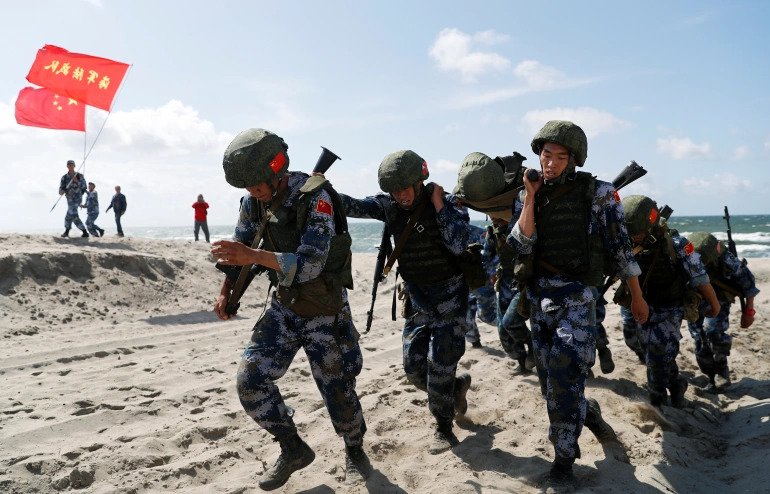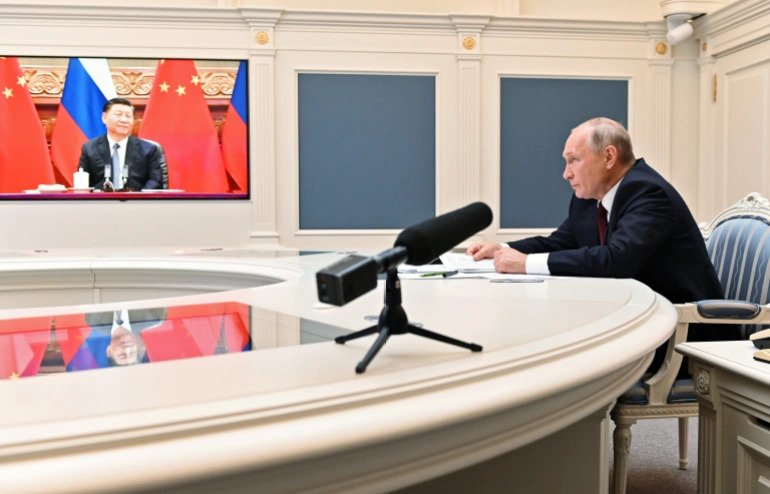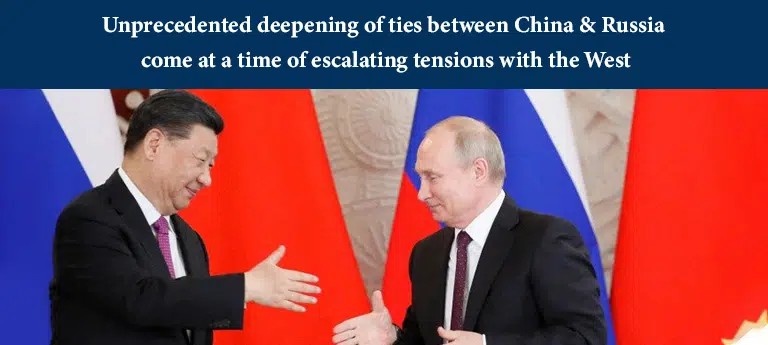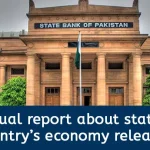Weeks after sailing warships around Japan’s main islet, the Chinese and Russian colors have transferred bomber breakouts into Japanese and South Korean air defense zones, forcing Seoul to scramble its fighter spurts in response.
In Tokyo on Tuesday, Japan’s Defence Minister Kishi Nobuo met journalists to express “ grave concern” over the common details, which took place last week, saying Beijing and Moscow’s moves easily indicate that the “ security situation girding Japan is growing more severe”.
As he spoke, his Chinese and Russian counterparts were holding virtual addresses, where they lauded the air and nonmilitary drills as “ major events” and signed a new pact to further consolidate defense ties.
Also Read: After the Biden-Xi summit, what next for the US-China trade war?
The roadmap, inked by Russia’s Defence Minister Sergei Shoigu and his Chinese vis-à-vis Wei Fenghe, limited a time that has seen an unknown growth in military cooperation, including large-scale war games in China’s Ningxia in August, when Russian colors came to the first foreign forces to join a regular Chinese drill, as well as adverts to concertedly develop military copters, bullet attack advising systems and indeed an exploration station on the moon.
“ It’s the strongest, closest and stylish relationship that the two countries have had since at least the mid-1950s. And conceivably ever,” said Nigel Gould-Davies, Senior Fellow for Russia and Eurasia at the International Institute for Strategic Studies (IISS).
Noting that China-Russia relations have historically been marked by collective heedfulness, including a border conflict in the 1960s that reportedly pushed Beijing and Moscow to the point of nuclear war, Gould-Davies said the current state of affairs is “ exceptional”. Ties have “ developed veritably fleetly, really within the once 10 times,” he said, accelerating in the wake of Western warrants on Russia over its annexation of Crimea in 2014.
Politic, profitable ties
It isn’t only on defense that the two have moved closer but also on the political and profitable fronts.
On foreign policy, Beijing and Moscow partake analogous approaches to Iran, Syria, and Venezuela, and later revived a drive to lift United Nations warrants on North Korea.
China’s President Xi Jinping and Russia’s Vladimir Putin have a particular fellowship, too, having met further than 30 times since 2013. The Chinese leader has indeed called Putin his “ stylish friend”.

For China, Russia is the biggest supplier of its munitions and the alternate-largest source of its canvas significances. And for Russia, China is its top country trading mate and a crucial source of investment in its energy systems, including the Yamal LNG factory in the Arctic Circle and the Power of Siberia channel, a$ 55bn gas design that’s the largest in Russian history.
Gould-Davies of the IISS said the main motorist behind all of this is China and Russia’s hostility towards liberal popular values.
“ Both countries are ruled by anti-democratic administrations that partake a strong common interest in defying the influence of liberal Western values within their own countries,” he told Al Jazeera. “ They also have a strong participated interest in undermining the countries and alliances, beyond their own borders, that embody liberal values. So, their main common interest is in effect, an ideological bone – they seek to undermine the popular and liberal West.”
Tone- fulfilling vaticination?
The deepening of ties has indeed bothered the West, with American intelligence assessments listing China, Russia, and their alignment as the biggest security pitfalls to the United States and NATO, the Western security alliance created in 1949 as a bulwark against the Soviet Union, planning to broaden its focus to address fighting both countries.
In an interview with the London- grounded Financial Times last month, NATO Secretary-General Jens Stoltenberg said he doesn’t see China and Russia as two separate pitfalls.
“ China and Russia work nearly together,” he said. “ This whole idea of distinguishing so much between China, Russia, either the Asia-Pacific or Europe — it’s one big security terrain and we’ve to address it all together.”
But some say this assessment is too simplistic and could affect “ grave miscalculations”.
“ There’s no grand conspiracy against the West,” said Bobo Lo, a former Australian diplomat and an independent transnational relations critic last month. “ What this is, is a classic great power relationship, meaning it’s driven by common interests, rather than participated values,” he said at a virtual talk organized by the US- grounded Center for Global Security Research.

By supporting each other, China and Russia gain “ critical tips”, Lo said, including buttressing the “ legality and stability of their separate administrations”. Defense cooperation allows Moscow to project Russian influence on the world stage, he added, while Beijing is suitable to gain access to Russia’s advanced military technology and functional experience.
The relationship also allows Moscow to “ fill the technological gap left by the pullout of Western companies in Russia” following warrants assessed in the fate of the annexation of Crimea. “ And Chinese investment in technology has been absolutely critical to the consummation of Russia’s Arctic LNG systems,” Lo said.
Alexander Gabuev at the Carnegie Moscow Center agrees.
Ties between Russia and China are “ driven by abecedarian factors beyond Western control”, he said, noting in a talk in March that the two countries also partake a kilometer ( afar) border. Due to the border clashes of 1969, “ they know how really dangerous and precious it’s to be adversaries,” he said.
That’s why, he said on Twitter last month, NATO’s claim that China and Russia are one challenge, “ overstates current position of China-Russia cooperation and nuances”.
Both countries are “ religious about their strategic autonomy,” he said. And “ by lumping China and Russia together as a quasi-alliance that needs to be combated through a unified toolkit, the West pitfalls creating a tone- fulfilling vaticination, when binary constraint leads to a farther deepening of China-Russia cooperation, that leads to further US pressure.”
‘Hypocritical raider’
For some, US pressure is the starting point.
“ Both China and Russia feel the US is a hypocritical raider whose intent on dwindling them in order to maintain ascendance,” said Einar Tangen, a Beijing- grounded political critic who also works as a judge for China’s state broadcaster CGTN.
US conduct in this regard, he said, includes imprinting the two countries as its biggest public security pitfalls, the duty of warrants over contended mortal rights abuses, as well as the forging of what Beijing and Moscow view Asanti-Russia-China alliances.
These include the Quadrangle, an informal US-led alliance that includes India, Japan, and Australia. The group, which China has denounced as an “ Asian NATO”, proceeded nonmilitary drills last time for the first time in 13 times. The four processions expanded the exercises this time by holding them in two phases in the Philippine Sea and in the Bay of Bengal.
https://twitter.com/AlexGabuev/status/1450195682409816069
Also, there’s the recently formed security alliance between Australia, the United Kingdom, and the US, known as the AUKUS. Publicizing the trilateral pact in September, the US and UK said Australia will get nuclear-powered submarines – a move judges said would allow the Australian cortege to patrol the disputed waters of the South China Sea as well as the Taiwan Strait.
China condemned the alliance as an “ extremely reckless” trouble to indigenous stability, while Russia called it a “ great challenge to the transnational nuclear non-proliferation governance”.
“ These ( type of conduct) inescapably encourage China to conduct near cooperation with Russia to seek complementary responses to hostile acts,” said Danil Bochkov, a critic at the Moscow- grounded Russian International Affairs Council.
These responses include the recent common Chinese-Russian drills in the vicinity of Japan and South Korea, both of whom are US abettors.
Bochkov said the enhancing contest may well affect in there-emergence of the rigid blocs seen during the Cold War, with the US-led community on one side and China, Russia, and their abettors on the other.
“ That creates geopolitical stalemate which seems insolvable to overcome whatsoever,” he said, “ leaving all powers to accumulate their muscle for the worst-case script by contemporaneously testing each other’s red lines with dangerous prick-suchlike original face-offs.”
Follow us on FACEBOOK for quick updates.






